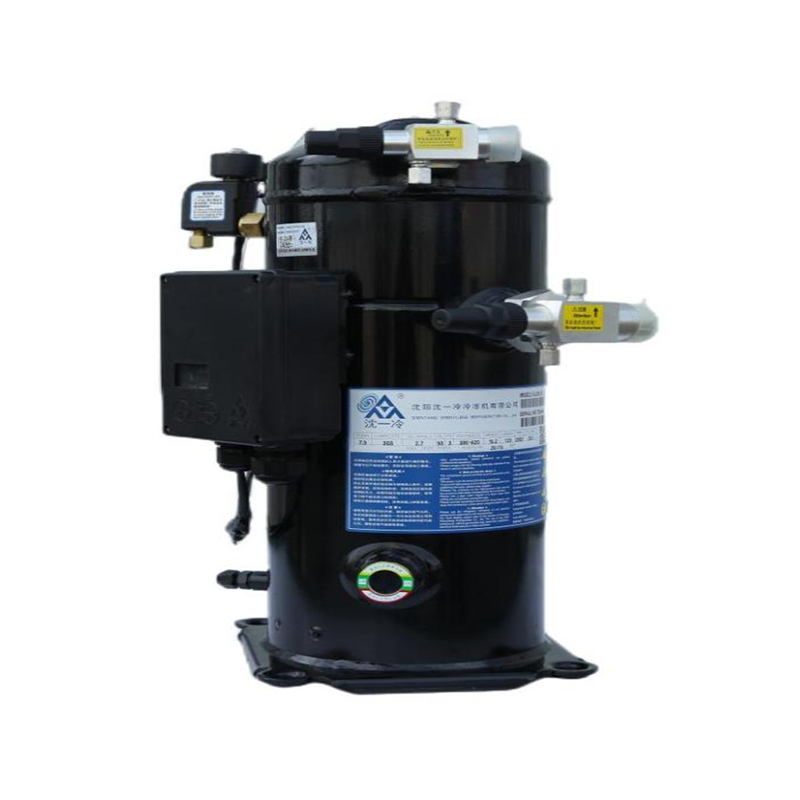How does a scroll compressor avoid compression gaps and gas reflux?
1. Working principle of scroll compressor
The working principle of a scroll compressor is based on the precise fit and continuous rotation between the movable scroll and the fixed scroll. The two scrolls have similar scroll shapes, but the phase difference is 180° and a certain eccentricity is maintained. When the eccentric shaft drives the movable scroll to rotate, multiple closed crescent-shaped compression chambers are formed between the movable scroll and the fixed scroll. As the eccentric shaft continues to rotate, the volume of these compression chambers gradually decreases, thereby continuously and smoothly compressing the inhaled gas to a high-pressure state and finally discharging it through the exhaust port.
2. Mechanism to avoid compression gaps
Precision machining and assembly: The scroll of a scroll compressor is usually manufactured using high-precision CNC machining equipment to ensure the accuracy and surface finish of the scroll profile. During the assembly process, through strict size control and gap adjustment, the fit gap between the movable scroll and the fixed scroll is kept within a very small range (usually 0.05mm-0.2mm), thereby effectively avoiding the generation of compression gaps.
Material selection: The choice of scroll material is also crucial. High-quality materials not only have good wear resistance and corrosion resistance, but also maintain stable size and shape under high temperature and high pressure environment. This helps to reduce the problem of increased compression gap caused by material deformation or wear.
3. Measures to prevent gas reflux
Closed chamber design: The scroll compressor forms multiple closed compression chambers through the continuous rotation and meshing of the movable scroll and the fixed scroll. These chambers gradually shrink during the compression process, and there is a sealing structure between adjacent chambers to ensure that the gas does not flow back to the compressed chamber during the compression process.
Exhaust valve control: Some scroll compressors are also equipped with an exhaust valve control system. When the gas pressure in the compression chamber reaches the set value, the exhaust valve automatically opens to discharge the high-pressure gas from the compressor. This process not only ensures the continuous discharge of gas, but also prevents the gas reflux caused by excessive pressure.
4. Other advantages and considerations
Low noise and vibration: The continuous and smooth compression process of the scroll compressor reduces the generation of mechanical vibration and noise, making it a significant advantage in places that require a low noise environment (such as hospitals, libraries, etc.).
High efficiency and energy saving: Due to the avoidance of compression gaps and gas reflux, the energy loss of the scroll compressor is significantly reduced, thereby improving the compression efficiency. In addition, its efficient working mode also helps to reduce energy consumption and operating costs.
Reliability and life: The precision machining and high-quality material selection of the scroll compressor improve its overall reliability and service life. At the same time, regular maintenance and reasonable use conditions are also key factors to ensure its long-term stable operation.


